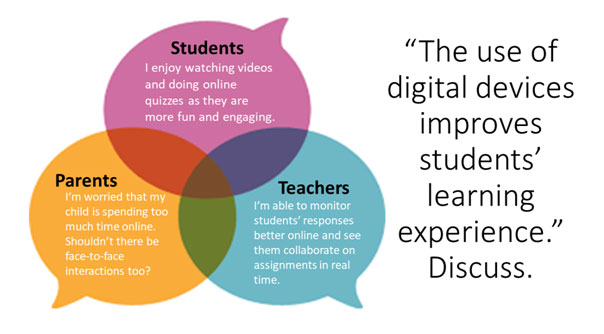At Thinking Factory, we believe that English writing skills are developed over time with consistent practice. That is why we have weekly Secondary English writing exercises, to help ease away your reluctance or fear when it comes to writing. Beyond that, Teacher Suba wants to boost your confidence in writing and in the Secondary 2 class, this is done in 3 ways.
Secondary English: How to boost confidence in Writing?
1. Vocabulary building
Imagine vocabulary as the colours to a black-and-white drawing. The lines of the drawing may be precise, showing you what the drawing is about, but it does not excite you or give life to the drawing until there is a splash of colour. This is why we ought to expand our “colour palette”, so to speak, so that we can use different terms to provide different shades of meaning.

Varying your vocabulary usage is like adding a rainbow of colours to your writing, reflecting the atmosphere and “character” of your write-up.
Take this sentence for example, “Gretel was very upset that her little brother had meddled with the present that she had prepared for Mrs Goh.” There are several ways to spice up this statement – can you think of how you can switch up the words and phrases to make this description stand out?
E.g. 1 Gretel was devastated that her naughty little brother had ripped open the present she had carefully prepared for Mrs Goh.
Inserting adjectives and adverbs, and using alternative verbs (in bold) show the reader how intense an emotion is (eg. devastated) or imagine how severe an action is (eg. ripped open).
E.g. 2 Fuming mad at the sight of the present that was now in shambles, Gretel turned towards the stunned little culprit who cowered at the corner of the room. He had no idea how much time and effort his sister had spent preparing the prized present, except the wrath that was going to be unleashed on him.
These vivid expressions (in bold) do more than describe the situation. They reveal the character of Gretel. By using words like ‘fuming mad’, ‘culprit’, ‘cowered’ and ‘wrath’, we know that Gretel is capable of great anger and so feared by her brother. Vocabulary in this example does more than using other words; it purposefully chooses words/phrases that express personality.
We will build vocabulary in class by reading and annotating on a variety of texts like excerpts of stories, expository texts, speeches and news reports. Interesting, vivid expressions will be identified in these texts and written into a vocabulary log, and students will attempt to use some of these new terms in subsequent writing exercises (at TF or at school)
2. Brainstorming strategies
These are not only useful in pre-writing planning, but also in the Spoken Interaction section of the Oral paper. How we brainstorm affects how clearly and comprehensively we discuss a topic. We will be practising the use of various organisers like mind maps, concept maps, and lists, and adopting Thinking Routines like Circle of Viewpoints (to examine an issue from different perspectives), TugofWar (to tease out and refine arguments), and See-Think-Wonder (to probe deeper into a stimulus like a picture or video).

How the thinking routine, Circle of Viewpoints (CoV), may be used to generate perspectives from different parties/stakeholders concerned.
3. Weekly Secondary English writing lessons
We will practise writing the different text types throughout the month, spending about an hour on 1 text type each week. This means you will try your hand at 2 situational writing pieces and 2 essay pieces within a month.
Here’s a sample of what the “menu” might look like over 2 months:
| Month X | |
| Week 1 (SW) | Informal letter / email |
| Week 2 (Essay) | Narrative essay |
| Week 3 (SW) | Formal letter/email |
| Week 4 (Essay) | Descriptive essay |
| Month Y | |
| Week 1 (SW) | Feature article |
| Week 2 (Essay) | Expository essay (Discursive) |
| Week 3 (SW) | Newspaper report |
| Week 4 (Essay) | Expository essay (Argumentative) |
We aim to cover a variety of text types so that you become a versatile writer – able to tease out the Purpose, Audience and Context (PAC) and adopt various styles, tones and format accordingly.
*We understand that your schools might be covering these text types in a different order, so we will tailor our coverage to complement what you are currently doing.
Image sources:
https://www.pinterest.com/pin/450500768949792965/, https://i.ytimg.com/vi/L_dbpewRo00/maxresdefault.jpg
Check the other articles from this section
- Tackling the Situational Essay: Using persuasive speech techniques
- How to write a good Situational Essay: Analyse, Amplify and Apply the appropriate tone
- Lower secondary Writing Series 1 – E01: How to analyse essay questions
- Lower secondary Writing Series 1 – E02: Narrative writing (or how to write good essays)
- Lower secondary Writing Series 1 – E02: Narrative writing practice
- Lower secondary Writing Series 1 – E03: Expository writing
- Lower secondary Writing Series 1 – E04: Hybrid writing
- Taking the Leap from Primary to Secondary English with Confidence!
- Secondary English Paper 1 components: Diagnosing your strengths and weaknesses
- Lower secondary Writing Series 1 – E05: Avoiding writing pitfalls
- Narrative Writing: Tips and Tricks
- From primary to secondary English: What’s new and challenging?
- Post-Exam Reality Check in 3Rs
- Tackling the Situational Essay (Part 3): Making Your Feature Article an Engaging Read
- Sec 2: 5 tips to help you write great English expository essays
- Discursive essay: Writing a well-developed body Paragraph
- 3 tips for tackling the summary Question
- Secondary 2 English – Editing through clue-finding
- Secondary 1 English: An introduction on how to create interesting characters
Don’t Miss Any Future Post!
2024 Bukit Timah Branch Secondary English Tuition Timetable
| Level | Class Type | Day | Time |
|---|---|---|---|
| S1 | All Components Class | SAT | 5 pm to 7 pm |

